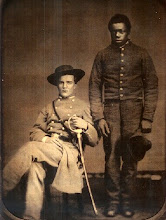
Running a business from the Bowery is somewhat of a task in itself it seems. Its not the occasional drooling Meth addict outside our door from the clinic a few blocks away. I actually like the reality of their company. Or the Bowery Mission and its perpetual crowd of loiterers outside its doors. Its the Bowery itself, with its many mysteries and omnimous presence that I think creates friction with the world around it. For instance, there is one phenomenon that I cannot rightly get passed in our days at the Barking Irons HQ. Quite often we get the innocent question about our address, “Bowery what?”. It baffles people that a street doesn’t have a surname. “Bowery Street?” they say? “No, just BOWERY” we counter. Time and time again it is a problem. We’ve even had couriers pause shipment because of this. Of course none of these people are from New York. However it brings up the question of why the Bowery is so mysterious to people. Better yet, what is the Bowery? and what does it mean today?
 You may say that its the lack of the surname that excludes the Bowery from other streets. Then again, Broadway doesn’t have a surname. Or is it because it has the word “Way” in it that it may be excused from such trials? It is however true that the Bowery had a surname prior to 1807, where it was then called a Road and before that a Lane. But to know why Bowery is called simply Bowery is to know how this road to perdition became such a mark on Manhattan in the first place.
You may say that its the lack of the surname that excludes the Bowery from other streets. Then again, Broadway doesn’t have a surname. Or is it because it has the word “Way” in it that it may be excused from such trials? It is however true that the Bowery had a surname prior to 1807, where it was then called a Road and before that a Lane. But to know why Bowery is called simply Bowery is to know how this road to perdition became such a mark on Manhattan in the first place. Bowery and Grand St. with the old 'L' tracks casting shadows for theives to hide.
Bowery and Grand St. with the old 'L' tracks casting shadows for theives to hide.
Bowery or Bouwerij in the old Dutch spelling was, the little country road to Peter Stuyvesant’s farm established in the 17th century. Bouwerij literally meant farm or farmland. Peter Stuyvesant was the patriarch of New York. A peg legged dutchman who single handedly purified young New York from the sins of an unruly colony of farmers and feuding dutch traders.
Later on, in the 19th century, Bowery became the poor man’s Broadway. It was filled with Museums, Theaters and Flop Houses of the day. Song writer Stephen Foster died on the Bowery, George Washington drank on the Bowery and legend has it there has never been any Churches built on the Bowery. That fact can be claimed by no other main artery of Manhattan. Perhaps that is a clue to the Bowery's true identity. For Bowery was never a safe road (until Whole Foods opened).
 The Bowery’s fall from grace began almost at the same time that it gained notoriety. Covered by a giant ‘L’ in the mid 19th century (which explains why the street is so wide today), it was cast in a dark shadow. This, no doubt, aided its mystique and its violence. Many gangs roamed the Bowery. From the Atlantic Guard to the Slaughterhousers to the Bowery B’hoys, each new decade brought more infamy. Then during 70’s and 80’s the Bowery was born again. It was the famed birthplace of punk, some might say. A baptism occurred, as the Ramones took the stage for the first time in 1974. Located at 315 Bowery, CBGB’s became a mecca for the new punk scene. But as worshipped as CBGB's was, it was not the church of the Bowery.
The Bowery’s fall from grace began almost at the same time that it gained notoriety. Covered by a giant ‘L’ in the mid 19th century (which explains why the street is so wide today), it was cast in a dark shadow. This, no doubt, aided its mystique and its violence. Many gangs roamed the Bowery. From the Atlantic Guard to the Slaughterhousers to the Bowery B’hoys, each new decade brought more infamy. Then during 70’s and 80’s the Bowery was born again. It was the famed birthplace of punk, some might say. A baptism occurred, as the Ramones took the stage for the first time in 1974. Located at 315 Bowery, CBGB’s became a mecca for the new punk scene. But as worshipped as CBGB's was, it was not the church of the Bowery.
The secret church on the Bowery exists in the most obvious of places it turns out. Getting back to the origin of the Bowery I found that it doesnt necessarily have a church on it, but it actually leads to a church. The Second Dutch Reformed Church existed where St. Marks Church exists today. Right on the old Stuyvesant farm and rightfully at the top of the Bowery. Why is this so significant to New Yorkers? Well as a church it may or may not be, but as the final resting place of Peter Stuyvesant, it should be the holiest of grounds.


2 comments:
I want more mulberry!
Great. We link you at:
http://grazianooriga.nova100.ilsole24ore.com
(QUI means NY)
graziano origa
Post a Comment